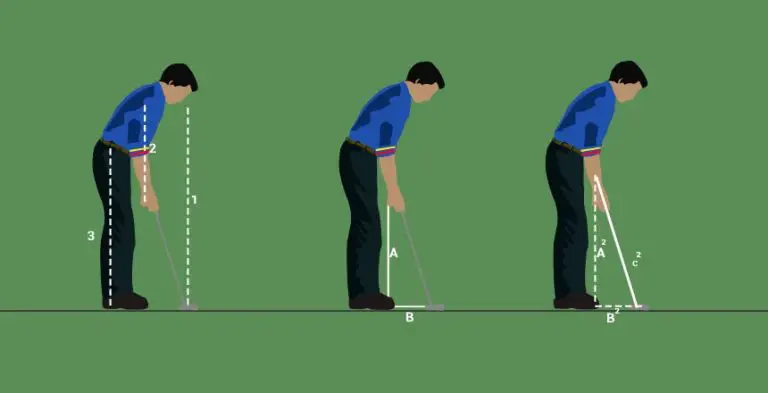How Long Does A Golf Tournament Last

Golf, a sport that combines precision, strategy, and athleticism, is renowned for its competitive tournaments that captivate players and spectators alike. As golf enthusiasts immerse themselves in the excitement of these events, questions often arise about the duration of a golf tournament. Understanding the factors that contribute to the length of a tournament can provide valuable insights into the dynamics of the sport and the logistics involved in organizing such prestigious events.
The duration of a golf tournament can vary significantly depending on various factors. These factors include the tournament format, the number of participants, and the course setup. Stroke play tournaments, where players accumulate strokes over the course of the competition, and match play tournaments, featuring head-to-head matches, present different structures that influence the time required to complete the event. Smaller-scale tournaments with fewer participants generally have shorter durations, while major professional tournaments spanning multiple days or weeks showcase the endurance and skill of top-ranked golfers.
Furthermore, the design and difficulty of the golf course impact the tournament’s duration. Course length, layout intricacies, and environmental conditions all contribute to the time golfers need to navigate each hole successfully. Additionally, factors such as playoff situations, weather conditions, and course modifications can further influence the overall duration of a tournament.
In this article, we will delve into the intricacies of golf tournament durations, exploring the key factors that shape them and examining notable examples from major championships. By unraveling the complexities of tournament duration, we aim to provide a comprehensive understanding of the timeframes involved in the world of competitive golf.

Factors Influencing the Duration of a Golf Tournament
When it comes to the duration of a golf tournament, several key factors come into play. These factors shape the structure of the tournament and affect the overall time required for completion. Let’s delve into each of these factors and understand their influence on tournament duration.
Tournament Format
The format of a golf tournament has a significant impact on its duration. Two common tournament formats are stroke play and match play.
Stroke Play Tournaments: In stroke play tournaments, each player completes every hole, and the total number of strokes determines the winner. This format typically requires each golfer to play 18 holes, although some tournaments may have a shorter course. The duration of a stroke play tournament depends on factors such as the course difficulty, the speed of play, and the number of participants.
Match Play Tournaments: Match play tournaments involve head-to-head matches between players or teams. In each match, players compete hole by hole, and the player or team with the most holes won emerges as the winner. Match play tournaments have the potential to last longer than stroke play tournaments since matches can extend beyond the 18-hole standard. However, the actual duration depends on the number of rounds and the pace of play.
Number of Participants
The number of participants in a golf tournament can greatly impact its duration. Whether it’s a small-scale local event or a large-scale professional tournament, the number of players involved affects the pace of play and the overall time required to complete the tournament.
Small-Scale Tournaments: In smaller local tournaments, the number of participants is relatively low. With fewer players, the pace of play tends to be quicker, resulting in shorter overall durations. These tournaments can typically be completed within a day or a weekend, making them ideal for golfers seeking a more casual and time-efficient experience.
Large-Scale Tournaments: Major professional golf tournaments often feature a significant number of participants, including top-ranked professionals from around the world. These tournaments extend over multiple days or even weeks, allowing for more rounds of play and ensuring fair competition. The larger player pool, combined with higher stakes and increased media coverage, contributes to the extended duration of these prestigious events.
Course Setup and Difficulty
The design and condition of the golf course also play a vital role in determining the duration of a tournament. Factors such as course length, layout, and overall difficulty impact the time required for players to complete each hole and, consequently, the overall tournament duration.
Course Length and Layout: Longer courses with more challenging layouts tend to increase the time needed to complete each hole. Golfers must navigate longer fairways, strategically position their shots, and overcome additional obstacles. Such courses prolong the duration of the tournament, as players require more time to execute their shots effectively. Conversely, shorter courses may result in faster play and shorter overall durations.
Course Conditions: The condition of the course, including the quality of the fairways, greens, and bunkers, can influence the pace of play. Inclement weather, such as heavy rain or high winds, can make the course more challenging and potentially lead to delays or interruptions. Additionally, the maintenance schedule of the course, including aerating or renovating greens, can impact tournament duration if such activities coincide with the event.
Now that we have explored the key factors influencing tournament duration, let’s examine some major golf tournaments and their respective durations. These prestigious tournaments attract the world’s top golfers and captivate audiences worldwide.
Major Golf Tournaments and their Durations
Several major golf tournaments have established themselves as cornerstones of the sport, showcasing exceptional talent and intense competition. Let’s take a closer look at some of these tournaments and the durations they typically span.
The Masters Tournament
The Masters Tournament, held annually at Augusta National Golf Club in Georgia, United States, is one of the most revered events in professional golf. Known for its pristine course conditions and iconic traditions, the Masters has a distinct duration that has evolved over the years.
Historically, the Masters spanned four days, starting on Thursday and concluding on Sunday. However, recent trends have witnessed adjustments in the schedule. To accommodate television coverage and enhance the viewing experience, the tournament introduced a two-tee start on the first two days, allowing for more golfers to start their rounds earlier. This change has extended the duration of the tournament, with play sometimes extending into Monday due to weather delays or playoff situations.
U.S. Open Championship
The U.S. Open Championship, organized by the United States Golf Association (USGA), is renowned for its challenging course setups and rigorous qualifying process. This major championship embraces a demanding test of skill and endurance.
Traditionally, the U.S. Open spans four days, starting on Thursday and concluding on Sunday. The tournament typically requires players to navigate a challenging 18-hole course for all four rounds. However, the duration may vary depending on factors such as weather conditions, course difficulty, and the number of participants who make the cut. In some instances, weather delays or playoff scenarios have resulted in the tournament extending into Monday.
The Open Championship
The Open Championship, often referred to as the British Open, is the oldest of the four major championships in professional golf. Steeped in tradition and played on iconic links courses, this tournament is known for its unique atmosphere and unpredictable weather conditions.
Similar to the other majors, The Open Championship usually spans four days, commencing on Thursday and concluding on Sunday. However, the tournament’s duration can be influenced by various factors, including the weather patterns commonly associated with links golf. Rain, strong winds, or fog can lead to suspensions or delays, ultimately affecting the overall time required to complete the tournament.
PGA Championship
The PGA Championship, organized by the Professional Golfers’ Association of America (PGA), showcases the talents of the world’s best golfers on a diverse range of courses throughout the United States. As one of the most prestigious events in professional golf, the PGA Championship offers an exhilarating and closely contested competition.
Traditionally, the PGA Championship has followed a four-day format, starting on Thursday and concluding on Sunday. However, the duration of the tournament may be subject to modifications based on factors such as course difficulty, weather conditions, and playoff situations. In recent years, weather delays have occasionally resulted in the final round being played on Monday.
These major golf tournaments, each with its own unique characteristics and challenges, demonstrate the diverse durations that can be associated with high-profile events. The specific length of a tournament can vary due to unforeseen circumstances, such as weather-related disruptions or the need for playoffs to determine a winner.
Other Factors Affecting Tournament Duration
Beyond the fundamental influences on golf tournament duration discussed earlier, there are additional factors that can contribute to the overall time required to complete a tournament. Let’s explore some of these factors.
Playoff Situations
In golf, playoff situations occur when two or more competitors finish a tournament tied for the lead or a qualifying position. Playoffs are necessary to determine a clear winner, and they can significantly extend the duration of a tournament. The number of playoff holes required and the competitiveness of the players involved can impact the length of the playoff. Playoffs can range from sudden-death formats, where the first player to win a hole is declared the winner, to multi-hole playoffs that can extend the tournament by hours or even an additional day.
The playoff duration depends on the players’ performance and their ability to secure a decisive victory. Memorable playoff moments, such as the epic 18-hole playoff between Tiger Woods and Rocco Mediate in the 2008 U.S. Open, showcase the unpredictability and excitement that can arise when determining a tournament’s champion.
Weather Conditions
Weather conditions have a significant impact on the scheduling and duration of golf tournaments. Inclement weather, such as heavy rain, thunderstorms, or high winds, can lead to delays, suspensions, or even cancellations. These disruptions can not only extend the duration of a tournament but also create logistical challenges for organizers and participants.
To mitigate the impact of adverse weather, tournaments may implement various measures, such as adjusting the schedule, shortening rounds, or even modifying the course setup. The safety and well-being of the players, spectators, and staff remain paramount, and tournament officials closely monitor weather conditions to ensure a fair and safe competition.
Course Modifications
During the course of a tournament, organizers or course management may implement modifications that can influence the duration of play. These modifications can be temporary or permanent and are usually made to enhance the challenge or address specific course conditions.
Temporary modifications may include adjusting tee placements, changing pin positions on the greens, or altering the length of certain holes. These adjustments can affect the strategies employed by the golfers and potentially impact the time required to complete each hole.
Permanent modifications, such as course renovations or redesigns, can have a lasting impact on the overall duration of a tournament. Changes to the course layout, new obstacles or hazards, and improved infrastructure can contribute to a different playing experience and potentially lengthen the time needed to navigate the course.
Examples of course modifications can be found in major tournaments like the U.S. Open, where the USGA often implements changes to the course setup to provide a challenging test for the world’s best golfers. These modifications, while adding excitement and difficulty to the tournament, can impact the duration of play.
Conclusion
The duration of a golf tournament is influenced by several factors, including the tournament format, the number of participants, and the course setup. Stroke play and match play tournaments have different structures that impact the time required to complete the event. Smaller-scale tournaments with fewer participants tend to have shorter durations, while major professional tournaments can extend over multiple days or even weeks.
The design and difficulty of the course, including its length, layout, and conditions, also play a role in determining the tournament’s duration. Additionally, factors such as playoff situations, weather conditions, and course modifications can further impact the overall time needed to complete the tournament.
Understanding these factors helps golf enthusiasts and spectators appreciate the complexities involved in organizing and participating in golf tournaments. From the revered major championships to local competitions, each tournament offers a unique experience and showcases the skill and determination of the players.
As the game of golf continues to evolve, so too may the factors that influence tournament duration. By staying attuned to the dynamics of the sport, golf enthusiasts can gain a deeper appreciation for the strategic, unpredictable, and captivating nature of golf tournaments.





